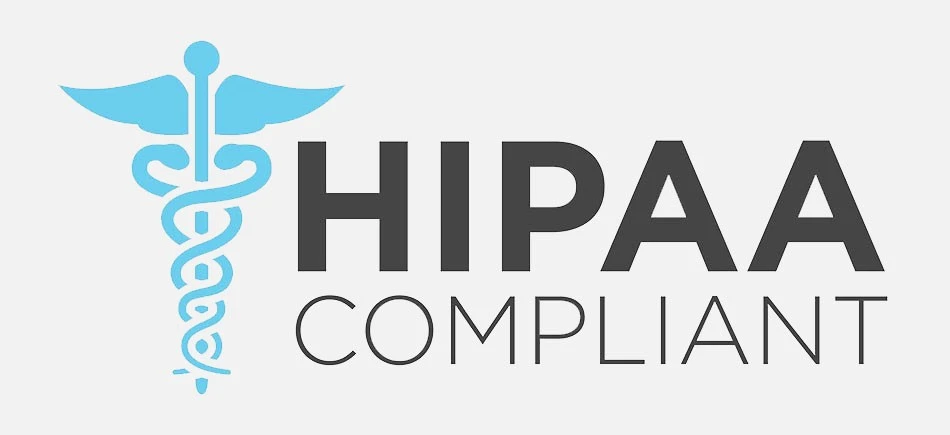Traditional patient registration, with its extended forms and manual data entries, can hinder efficient healthcare delivery. Over reliance on human input risks data discrepancies, impacting healthcare efficiency and lowering patient satisfaction. Furthermore, inaccurate data can jeopardize care quality, underscoring the need for improved registration methods. In addressing these challenges, digital innovations have emerged as a promising solution.
A study by the American Medical Association reveals that implementing digital registration solutions can reduce patient waiting times by up to 50%. These digital solutions, ranging from online registration systems to self-service kiosks, can automate data collection and verification, thus reducing the chances of human error. Curious to know more about the revolution in healthcare registration? Join us as we delve into how digital innovations and AI are transforming patient registration, making healthcare more efficient and patient friendly.
The Current Trend in Patient Registration
The trend in patient registration is moving towards automation and digitization. Gone are the days of lengthy paper forms and manual data entry. Instead, the use of digital platforms allows patients to input their details at their convenience, reducing wait times and improving the patient experience.
-
Biometric Registrations
These are increasingly used in patient registration systems to ensure security and accuracy. This involves unique biological characteristics like fingerprints, facial recognition, or iris scans for patient identification, reducing errors and enhancing patient safety.
-
QR Codes Check-ins
This method has emerged as a fast and contactless method for patient registration. Patients simply scan a QR code provided by the healthcare provider with their smartphone, which then directs them to fill out their registration information online, avoiding unnecessary paperwork and wait times.
-
AI-Powered Admissions
Healthcare centers are keen on using artificial intelligence to automate and streamline the patient registration process. AI algorithms can quickly process patient information, identify potential issues, and provide recommendations for the most appropriate care, improving efficiency and patient outcomes.
-
Chatbot Sign-ups
This process of signing up is becoming more common due to the ability to provide 24/7 patient registration services. These AI-powered chatbots can guide patients through the registration process step-by-step, answer common questions, and even schedule appointments, providing a convenient and user-friendly experience.
-
Enrollments via Wearable Technology
Now, this is an innovative trend in patient registration. Patients can use devices like smartwatches or fitness trackers to share real-time health data with their healthcare providers. This not only simplifies the registration process but also allows for continuous health monitoring and personalized care.
AI and Its Role in Patient Registration
Artificial Intelligence plays a vital role in modern patient registration systems. Using AI, healthcare centers can automate data entry, check for errors, and even predict future trends based on past data. For instance, AI algorithms can identify patterns in patient no-shows and help in devising strategies to curb them. Automated patient identification is one such AI application that ensures accurate patient identity by cross-verifying multiple data points, thereby reducing errors and potential fraud. The use of AI in patient registration also allows pre-appointment data collection, where patient information is collected and processed in advance, making the registration process smoother and faster.
Moreover, many service providers actively use AI-based predictive analytics to track no-shows and cancellations, enabling healthcare providers to optimize appointment schedules and resources. And that is not all - using AI also aids in real-time eligibility checks, verifying a patient's insurance details instantly and reducing the chances of claim denial. Patient risk stratification is another crucial role assigned to AI, to help categorize patients based on their health risks, thus better informing care plans and management strategies. Lastly, AI in healthcare contributes to smart appointment scheduling, where it predicts the best appointment slots based on several factors like patient preferences, doctor availability, and urgency of care. Thus, AI is a key player in modernizing patient registration and elevating healthcare delivery.
Benefits of AI Integration
AI integration into patient registration systems offers numerous benefits. It brings about efficiency, accuracy, and scalability. AI systems can handle large volumes of data in real-time, ensuring accurate patient records that can be easily retrieved when needed. Furthermore, they can learn and adapt over time, providing healthcare providers with insightful data to improve patient care.
-
Intelligent Patient Volume Forecasting
Enhanced accuracy in predicting patient influx and hospital visit rates.
-
Resource Allocation Efficiency
Optimized use of medical supplies and equipment based on anticipated patient volume.
-
Predictive Equipment Maintenance
Proactive maintenance of medical equipment based on expected patient load.
-
Personalized Patient Outreach
Targeted and effective communication with patients pre- and post-admission.
-
Data Security Measures
Real-time protection of sensitive patient data collected during the registration process.
-
Automated Admission Procedures
Streamlined admission and discharge procedures, improving patient experience.
-
Risk Stratification
Efficient prioritization of high-risk patients based on data collected at admission.
-
AI-Enhanced Patient Support
Efficient patient support and care coordination throughout the healthcare journey.
-
Healthcare Delivery Insights
Comprehensive understanding of patient care strategies based on data collected at admission.
-
Optimized Staffing Solutions
Effective staffing and resource allocation based on anticipated patient volume.
-
Billing and Insurance Verification Automation
Increased efficiency in financial aspects of patient care.
-
Informed Healthcare Decisions
Strategic decision making based on comprehensive patient data.
-
Patient Retention Strategies
Proactive initiatives to ensure patients follow through with care plans post-registration.
The future of patient registration lies in digital innovations and AI integration. These advancements are revolutionizing the healthcare industry, making the registration process more efficient and accurate, and improving the overall patient experience. As AI technology continues to evolve, we can expect to see even more improvements in the patient registration process, further enhancing patient care and healthcare delivery.
Conclusion
In conclusion, optimizing the patient registration process is an essential step towards improving healthcare delivery. The integration of digital patient registration services, including the use of AI in patient registration services, offers promising solutions to streamline this process and enhance patient satisfaction. By employing these strategies and seeking guidance from patient registration consulting services, healthcare providers can effectively revolutionize their approach. The future of healthcare is digital, and embracing these innovative patient registration solutions will pave the way for a more efficient, patient-centric healthcare experience.
Get a FREE QUOTE!
Decide in 24 hours whether outsourcing will work for you.
Have specific requirements? Email us at: ![]()
Key Differentiators
Software At O2I Healthcare
Specialties HIPAA Compliance HIPAA 5010
Standards Compliance CPT Coding
Compliance Healthcare
Processes Medical
Billing Process Charge
Entry Process Medical
Coding Process Medical
Claims Process FAQs on Medical Accounts
Receivable Services FAQs on Outsourcing
Claims Adjudication Services Medical
Transcription Process HL7 ICD-10 Compliance
-
 Outsourcing Medical Billing Services - Evaluating its Impact on Your Practice
Outsourcing Medical Billing Services - Evaluating its Impact on Your Practice
-
 US-based Healthcare Research & Consulting Firm Approached O2I For Medical Transcription Services
US-based Healthcare Research & Consulting Firm Approached O2I For Medical Transcription Services
-
 Outsource2india Provided Patient Onboarding Services to a Leading Healthcare Company
Outsource2india Provided Patient Onboarding Services to a Leading Healthcare Company
-
 Outsource2india Assisted a Florida-based Medical Billing Company with ICD-10 Implementation
Outsource2india Assisted a Florida-based Medical Billing Company with ICD-10 Implementation
-
 Caribbean Radiologists Got STAT Reports Automation Services from Outsource2india
Caribbean Radiologists Got STAT Reports Automation Services from Outsource2india
-
 Outsource2india Helped a Medical Imaging Firm with Quick Teleradiology Services
Outsource2india Helped a Medical Imaging Firm with Quick Teleradiology Services
Frequently Asked Questions (FAQs)
In what ways can technological advancements enhance the patient registration process?
Technological advancements can enhance the patient registration process in several ways. For example, AI algorithms can accurately manage and interpret data, reducing errors. Online registration platforms and mobile apps can also offer a more convenient and user-friendly experience.
How does a standardized registration process contribute to a better patient experience?
A standardized registration process ensures that each patient undergoes the same comprehensive procedure. This level of consistency can improve the patient's experience by reducing confusion, speeding up the process, and ensuring that all necessary information is accurately captured.
What is the significance of staff training in the optimization of the patient registration process?
Staff training plays a significant role in the optimization of the patient registration process. It equips the staff with the necessary skills to handle modern technologies, understand the standard procedures, and manage patient interactions effectively.
How does pre-registration enhance the efficiency of the patient registration process?
Implementing pre-registration can enhance efficiency by allowing patients to provide their information ahead of their visit. This reduces the administrative tasks at the time of the visit and allows healthcare providers to verify and prepare the patient's data in advance.
What strategies help in minimizing errors during the patient registration process?
Minimizing errors in the patient registration process can be achieved through a combination of strategies such as implementing digital tools that automatically validate data, standardizing the process for consistency, and offering regular staff training to enhance their data capturing skills.

















 \
\





